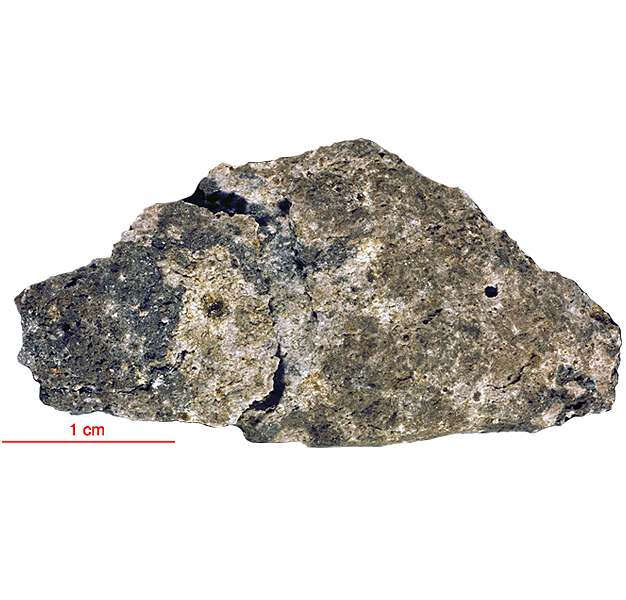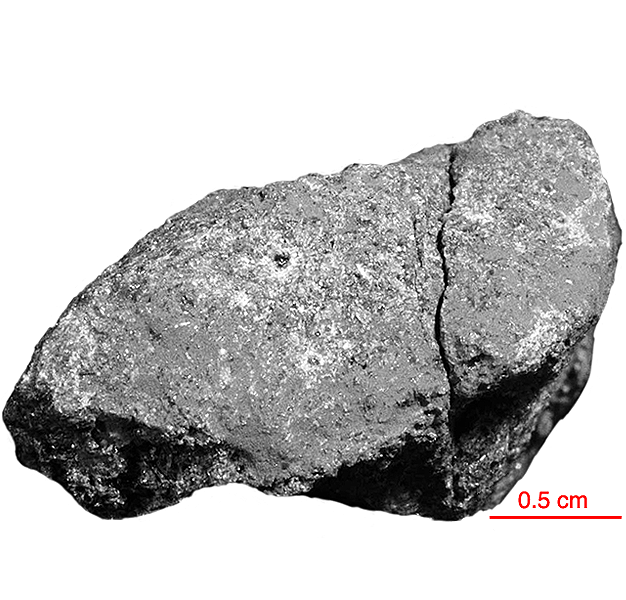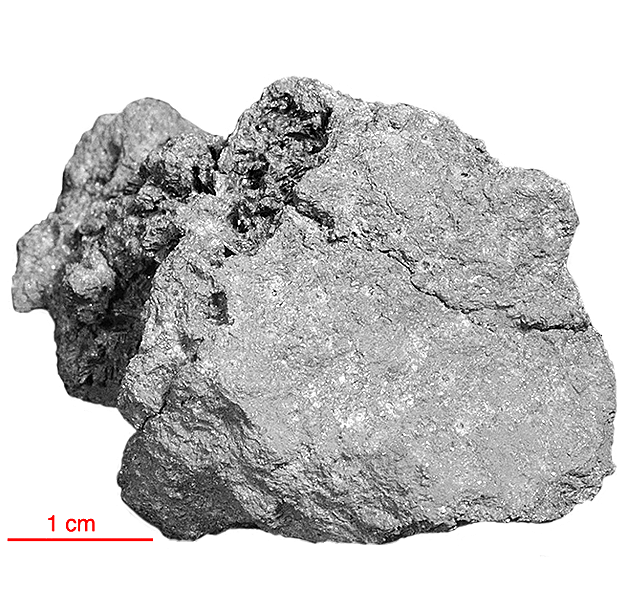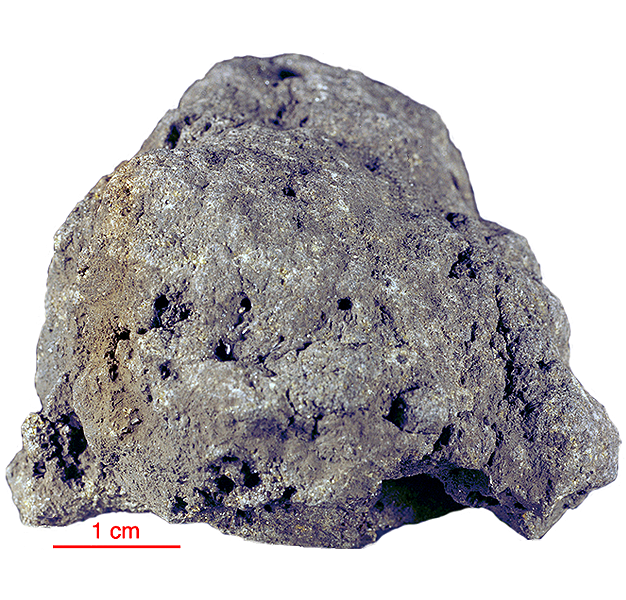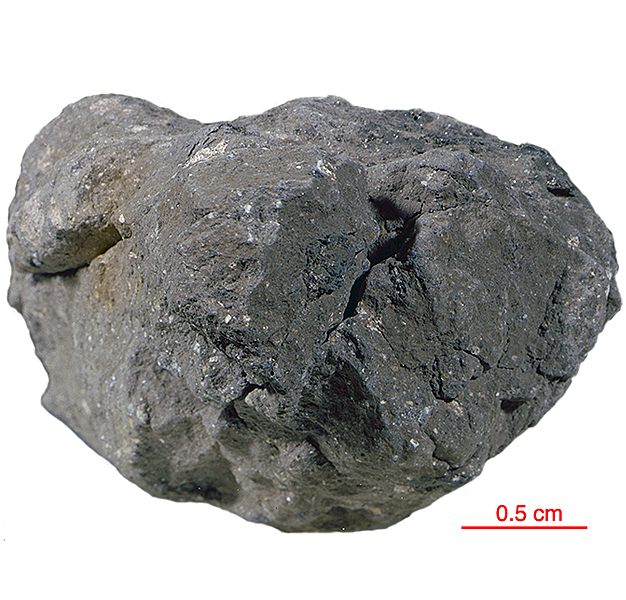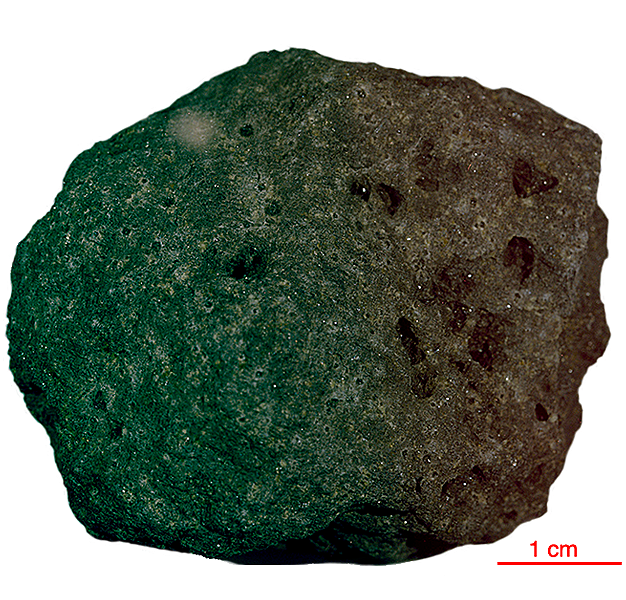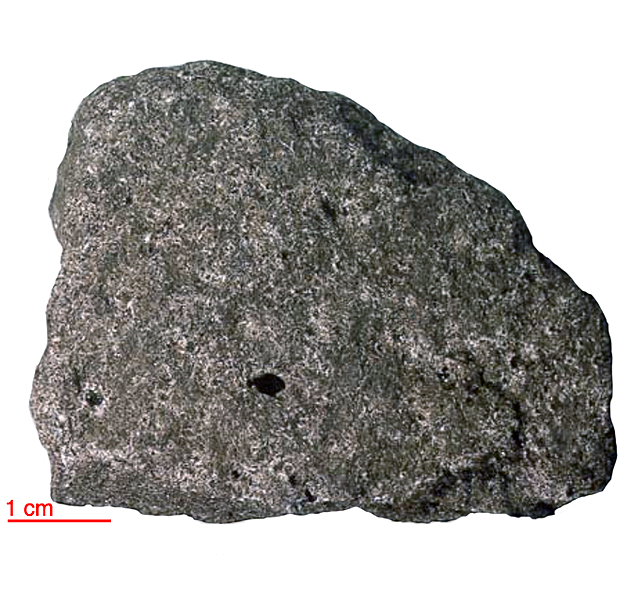
Fact sheet
12047 is a medium-grained, equigranular rock. The intergrown of lath-shaped plagioclase and equant to slightly elongate pyroxene suggests coetectic crystallisation. Elongate ilmenite and small segregations of “symplectoid mesostasis” are common features.
The sample weighed 193 grams before analysis. It has not been dated and no mineral analyses are available. Note the thin section is slightly thick (> 30 microns).
12047,6 is on public display at the Museum of Flight, Seattle, USA.
Further details of this and other Apollo samples are here: http://curator.jsc.nasa.gov/lunar/
Apollo 12 returned 34 kilograms of samples, including 45 rocks, samples of lunar 'soil', and several core tubes that included material from as much as 40 centimetres below the lunar surface.
Apollo 12 rocks were almost all basalts, with only two breccias in the returned samples. The basalts at the Apollo 12 site formed 3.1 to 3.3 billion years ago, roughly 500 million years later than the Apollo 11 basalts. Overall, there is much less of the element titanium in the Apollo 12 samples than in the Apollo 11 samples, which explains the more reddish colour of this region. The differences in age and chemical composition between the Apollo 11 and Apollo 12 samples demonstrate that mare volcanism did not occur as a single, Moon-wide melting event.
Apollo 12 was launched on 14 November 1969.

